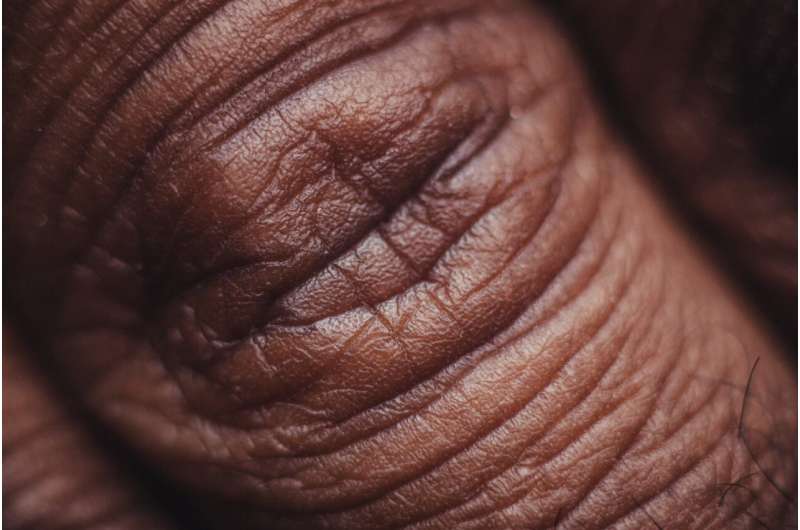Credit: Unsplash/CC0 Public Domain
New research from Boston Medical Center has found that while tinted sunscreens offer protection from certain skin conditions that disproportionately affect people of color, the lack of tinted sunscreen options for darker skin tones may discourage many people from using them. An analysis of consumer preferences of over the counter products found that 62 percent of tinted sunscreen products are only available in one shade. Published in Cutis, researchers found that cosmetic elegance and tone compatibility are the most important criteria for individuals seeking tinted sunscreens, characteristics that physicians should consider when making recommendations for individuals to improve adherence and protect against harmful visible light.
Visible light has been shown to increase tyrosinase activity and induce immediate erythema in light-skinned individuals and long-lasting pigmentation in dark-skinned individuals. Researchers explored the formulation of sunscreens with iron oxides and pigmentary titanium dioxide, finding these to be safe and effective ways to protect against high-energy visible light, especially when combined with zinc oxide. The tint from iron oxide or pigmentary titanium dioxide can also provide better cosmetic coverage and blend than traditional physical based sunblock.
Through an analysis of consumer preferences of over-the-counter products, study findings show that tone incompatibility was the most commonly cited negative feature by users of tinted sunscreen products, with the majority of all comments being shared by consumers with darker skin tones. The top recommended products corresponded with increased shade options, indicating the lack of shade diversity in products is an area that needs improvement.
"This study suggests that patients with skin of color encounter difficulties in finding matching shades in tinted sunscreen products," says Neelam A. Vashi, MD, founder and director of the Center for Ethnic Skin at Boston University and director of the BU Cosmetic and Laser Center at Boston Medical Center. "These difficulties may stem from a lack of knowledge regarding dark complexions, and the limited selection of shades pose a roadblock to proper treatment and prevention that can lead to inequities, disproportionally affecting those with darker skin tones."
Tinted sunscreens have been incorporated into daily-life products such as makeup, moisturizers, and serums, decreasing the need for multiple products and making application easy and convenient.
Researchers measured consumer preferences among 58 tinted sunscreen products sold by a top online supplier, chosen based on the inclusion of reviewers' underlying skin tones. Descriptive data for each product were collected. The top 10 positive and negative reviews as voted by consumers were analyzed and coded by a consensus qualitative coding scheme with descriptors in five major categories: cosmetic elegance, performance, skin compatibility and tolerance, tone compatibility, and affordability.
Results of the analysis showed that more than 79 percent of products had a reported SPF of 30 or higher. Sunscreens with an active physical ingredient, titanium dioxide or zinc oxide, were most common, and 98 percent of products contained pigmentary iron oxide. All products had additional claims like hydrating, antiaging effects, smoothing texture, minimizing the appearance of pores, softening lines, or promoting an even skin tone. The median review rating was 4.5 of 5 stars with a median of 2,300 customer reviews per product.
"The results of this study show that the beauty industry and the dermatologic field must work to deliver culturally sensitive care by being more knowledgeable about darker skin tones and offering more options for tinted sunscreen formulations tailored to people with skin of color," says Vashi, also a dermatologist at Boston Medical Center and an associate professor of dermatology at Boston University School of Medicine. "Tinted sunscreen products represent an important opportunity to ease application, improve satisfaction, and protect people of color from sun exposure."
This study provides important insights to help dermatologists improve their familiarity with all skin tones. For future studies, researchers suggest broadening the retailer's monitor to provide more comprehensive results.
More information: Henriette De La Garza et al, Tinted Sunscreens: Consumer Preferences Based on Light, Medium, and Dark Skin Tones, Cutis (2022). DOI: 10.12788/cutis.0504
Provided by Boston Medical Center























